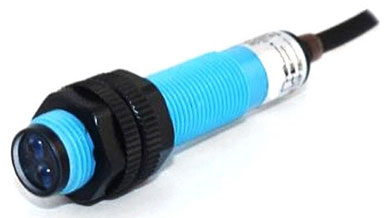What should be Paid Attention to When Installing Photoelectric Sensor?
Fri, Aug 19 by ATO.com
The photoelectric sensor has the advantages of high precision, fast response, non-contact, etc., and can measure many parameters. The photoelectric sensor has a simple structure and flexible forms. It has been used for level detection, liquid level control, product counting, width discrimination, speed detection, and fixed length. So, what should be paid attention to when installing a photoelectric sensor?

Installation precautions for photoelectric sensor
- Avoid strong light sources. Photoelectric sensors generally work stably when the ambient illumination is high. However, the optical axis of the sensor should be avoided to face strong light sources such as sunlight and incandescent lamps. When the angle between the optical axis of the sensor (light receiver) and the strong light source cannot be changed, a shading plate or a shading long tube can be installed around the sensor.
- It is strictly forbidden to use chemicals such as thinners, so as not to damage the plastic mirror.
- The wiring of high-voltage line, power line and photoelectric sensor should not be placed in the same wiring pipe or wire slot, otherwise the photoelectric switch may malfunction or be damaged due to induction, so in principle, separate wiring is required.
Photoelectric sensor should be avoided to be used in the following places
- A place with a lot of dust.
- A place with a lot of corrosive gas.
- A place where water, oil, and chemicals may splash directly.
- The place where the ambient temperature change exceeds the specified range of the product.
- The place where the vibration and shock are large and the shock-absorbing measures are not taken.
Installation requirements of photoelectric sensors for different detection methods
- For diffuse reflective photoelectric sensors
Installed within the action distance of the detected object, most diffuse reflective photoelectric sensors are equipped with an adjustable detection distance potentiometer, which is convenient to adjust the distance for different reflected luminosity of the detected object, but cannot work in a critical state. The photoelectric sensor detects objects that are greater than 3 times the detection distance and cannot have strong background reflective objects. - For retro-reflective photoelectric sensors
The photoelectric sensor is installed in the detection area in parallel with the reflective plate. Most of the retro-reflective photoelectric sensors have sensitivity. Adjusting the potentiometer is convenient to adjust the small beam when the area of the detected object is too small, but it cannot work in a critical state. The detection distance is long, and it is not disturbed by background objects outside the detection area. - For through beam photoelectric sensors
The through beam photoelectric sensor is divided into two parts: the transmitting part and the receiving part. Due to the divergence of light, the beam emitted by the transmitting part is not a straight line, but a divergent shape, and the light spot may become larger at a distance from the transmitting part. Therefore, in the installation of through beam photoelectric sensors, especially when multiple sensors are installed at the same time and the distance is relatively close, attention should be paid to the installation method of the sensors to prevent mutual interference between the sensors.

